Basic Cooking Skills Making a Sauce
Tips to Make Sauce Making a sauce from scratch is the best method to liven up a dish that would otherwise be boring. By combining all the various components of a dish into one, a picture-perfect sauce may turn your meal into a culinary adventure.
Let’s start creating simple, foundational sauces at home by learning the fundamentals of sauce making.
Basics of Making Sauce
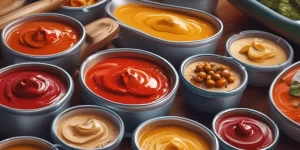
Making a sauce often entails mixing a liquid, flavorings, and a thickening agent. Anything from wine or juice to water and stock could be the liquid. Frequently used thickeners include cornstarch, flour, or even puréed vegetables. Herbs, spices, and other aromatic components give food their flavors.
The Value of Preparing Sauces
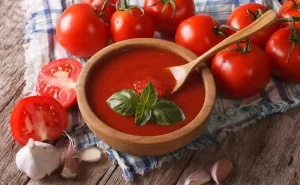
- One should not overlook the diversity of sauces. Sauces contribute:
- Taste and Texture
- Wetness and Visual appeal
- Typically, a sauce is made out of seasonings, a thickener, and a liquid.
Liquids such as milk or cream, broth, and cooking wines are frequently utilized. The most common type of thickening is a roux, which is composed of equal parts flour and oil. Although it might not have as much flavor, starch produces a liquid slurry. Egg yolks are used to thicken custards and creamy sauces. The majority of sauces are made by “reduction,” which is the process of boiling down large amounts of liquid with aromatics and herb mixtures over heat. Reducing liquids makes it thicker and less runny while also significantly improving flavor.
Easy Pan Sauce
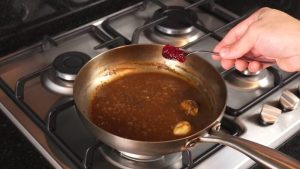
Start with a basic pan sauce to expertly add a sauce to your plate and enhance your seared protein. The idea of deglazing a skillet after cooking meat is introduced by Sauteing Meat, which greatly enhances the dish’s flavor.
Use the residual fat in the pan and the crispy brown bits, or “fronds,” as the base for your pan sauce right after sautéing. To achieve the desired depth of flavor, add aromatics like garlic or shallots and spices. Then, deglaze the hot pan with water, broth, or wine. This mixture makes a wonderful and simple pan sauce that you can pour over your protein and eat as the main course of your meal by simmering it with a small amount of fat (butter or milk). You can modify this blueprint to suit any cuisine by changing the spices and aromatics.
5 “mother sauces”

In French cooking, there are five “mother sauces,” or foundational sauces, that serve as the foundation for an infinite number of additional sauces. You’ve probably been preparing some of these core sauces all along without even recognizing it 😉.
1: The Bechamel Cream Sauces
A basis for cream sauces that is made by heating milk or cream and then thickening it with a roux. For a lovely, creamy pasta sauce, melt the cheese into the cream.
2: Veloute white Sauce
A white sauce made with a lighter stock (fish, veal, or chicken) and thickened with roux. Many mushroom sauces and gravies begin with a veloute.
3: Espagnole Brown Sauce
The ingredients for Espagnole, a brown sauce, are beef stock, tomato, mirepoix, and roux, a thickening agent. It is very similar to veloute. An espagnole is used to make the traditional French demi-glace, which is eaten with meats that are deeper in color.
4: Tomato Sauce
Add a ton of canned tomatoes and simmer them after sautéing onions and garlic to make a basic tomato sauce. Make amazing Spanish or Italian red sauces with this base.
5: Hollandaise Sauce
The secret behind Hollandaise, the most unique of the five mother sauces, is emulsification rather than reduction or a roux. Egg yolks serve as a binding agent between lemon juice and butter, resulting in a light garnish for brunch or veggies. Hollandaise is a lot like mayos or aiolis.Save up to 40% off at Aquasana with code LS
Identifying Ingredients and Flavors
- Different base ingredients are needed for different sauces:
- Pasta and pizza go very well with tomato-based sauces.
- Fish and poultry go well with cream sauces.
- For meats like beef and pork, spicy and tangy sauces work wonders.
- For optimal results, use premium, fresh ingredients.
Heat’s Function
The final consistency and flavor of your sauce can be significantly impacted by the amount of heat you apply during cooking. While a short boil may diminish the sauce and emphasize its qualities, a leisurely simmer can combine flavors.
Juggling Tastes
The key to sauces is balance. A little cream or sugar can balance out a too-tangy sauce. Perhaps a dash of vinegar or a touch of salt can help if it’s too flat. Taste as you proceed and make any adjustments without fear.
Tricks and Tips for Trying New Things
- Start with modest batches when trying out new recipes.
- For future reference, make a note of what works and what doesn’t.
- You may always add extra spices afterward. Start with a tiny amount.
- Think about the dish you plan to serve your sauce with. Potent tastes
- Could overwhelm delicate meals, and vice versa.Shop Yoga Gear & Apparel at Gaiam.com
Common Mistake when Making Sauce and how to Resolve the problem
One of the most fulfilling achievements for a home cook is creating their own sauces rather than depending on items from jars, bottles, or packets. Making your own sauce gives you more control over what goes into it, improves its flavor, and saves money. It’s a huge victory, to put it briefly. However, creating sauces can also lead to errors. very thick, lumpy, separating, or just burned sauces. Here are five typical sauce errors and how to prevent them.
1: Cheese Sauce

Making your own mac and cheese sauce is a huge improvement over using boxed cheese sauce. Shredded cheese is stirred into bechamel, a basic white sauce, to create a homemade cheese sauce. The bechamel’s starch prevents the cheese sauce from separating. However, choosing the correct cheeses is the real secret to creating a silky, smooth cheese sauce that coats the macaroni evenly. multiple.The problem is that while young cheeses, like as Monterey Jack, melt easily, they lack flavor. Conversely, aged cheeses, such as cheddar, are very flavorful but don’t melt as easily. They don’t melt completely, but they do stretch.
Resolve it
Therefore, your cheese sauce is more likely to split into clumps of cheese encircled by oil if you use only cheddar. It will be wonderfully smooth but not as tasty if you use only Monterey Jack. Instead, experiment with a ratio of one part stretchy cheese, like cheddar, to two parts melty cheese, such Monterery jack. As long as you maintain a 2:1 ratio of melty cheese to stretch cheese, you can also add other cheeses, such as Gruyere or Emmental, which are roughly halfway between jack and cheddar.
2: The Hollandaise Sauce
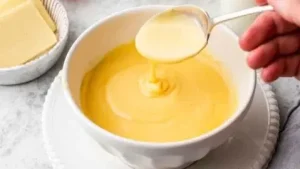
Melted butter is whisked into egg yolks to create the traditional emulsified sauce known as hollandaise. When done correctly, the end product is buttery, smooth, and creamy. A faulty Hollandaise sauce can definitely be rectified, unlike other sauce errors that are better avoided than attempted to be fixed. It is impossible to recover from the usual hollandaise error of overcooking the egg yolks. However, the most frequent issue is that the emulsion breaks, resulting in streaks of liquid butter rather than a consistent, creamy sauce. Usually, too little (or too much) whisking or a temperature problem are to blame.
Resolve it
Try adding a spoonful of boiling water, one drop at a time, to your broken hollandaise to remedy it. If it doesn’t work, take out another dish, separate one egg, and put just the yolk in the other bowl. Then, as you beat furiously, gently pour in the broken sauce.
3: The Marinara Sauce
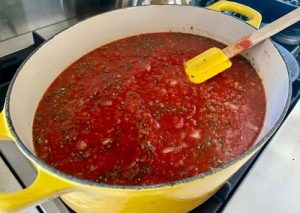
When making marinara sauce, the most common mistake is overcooking it. The idea that “marinara sauce” is just a synonym for “tomato sauce,” which it is not, may be the cause of this.The classic marinara sauce is a quick and light sauce made with tomatoes, olive oil, and garlic.
Other tomato-based sauces, such as beef ragù, which is just a slow-braising of a piece of meat in tomato sauce, or slow-simmered sugo di pomodoro, may cook for a long period.
Resolve it
However, in marinara, the tomatoes should be cooked as little as possible. The sauce should retain its fresh flavor and tomato texture even if you use canned tomatoes. You’ve probably ruined marinara if you’ve cooked it for more than 20 minutes.Avoiding that is the answer! Make use of a quality recipe and adhere to it. Additionally, avoid the urge to add too many unnecessary components to your marinara.
4: Barbecue Sauce
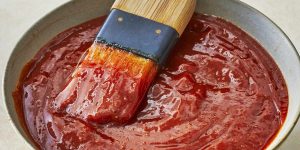
A little different from the sauces mentioned above, the most often mistake with barbecue sauce is not in how it is made but rather in how it is applied. Using barbecue sauce wrong, whether it’s as a marinade or too early in the cooking process, is the worst mistake home chefs make.
Resolve it
The main constituents of barbecue sauce, which is a sweet sauce, are molasses, brown sugar, and/or ketchup. Around 320 degrees Fahrenheit will cause the sugars in these foods to begin caramelizing, and at 350 degrees, they will do so more quickly than your protein will. The interior will be raw, but it will begin to smoke, turn black, and burn. Avoid this by cooking the chicken, ribs, or steak three-quarters of the way through, brushing it with sauce, and then grilling it for the final quarter to caramelize it. The finished dish will have all of the sweet and tangy flavors of excellent barbecue on the outside and be cooked through on the interior.
5: Pan Gravy
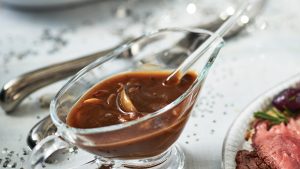
Texture is everything when it comes to gravy. The two most common mistakes are lumpy gravy and too thick or just sticky gravy; these issues are connected. To prepare a simple pan sauce, pan drippings from roasted pork or fowl are combined with flour and stirred to create a roux. To thicken sauces, roux is a fat and starch mixture in equal amounts. Following the roux’s formation, boiling stock is whisked in and boiled for a while to get the desired consistency and eliminate the taste of raw flour.
Most of the problems occur when the flour is not completely stirred into the pan drippings, when the stock is added to the roux, or when the liquid is added too rapidly. Lump formation may result from any or all of these errors. To avoid this, whisk vigorously while adding the flour to the pan drippings. Next, add the hot stock slowly while mixing vigorously. . Additionally, you can use a standard blender or an immersion blender to smooth out any lumps in your gravy.
Resolve it
Similarly, it’s simple to use too much flour. The gravy appears to have the perfect consistency at first, but as it simmers, it thickens to the point where a spoon can barely stand up in it. You may simply whisk in more hot stock and return the gravy to the heat if this occurs.
On the other hand, prepare a tiny amount of roux in a different pan before adding it to the thin sauce if your simmered gravy is too thin. There’s no doubt that adding dry flour straight to hot stock will result in a lumpy gravy.
Here’s a handy rhyme for cooking pan gravy: Always use the roux!
Conclusion
Making sauce at home involves more than just following instructions; it also involves comprehending how flavors, ingredients, and methods combine to produce delectable results. So go ahead, get your supplies together and begin exploring the fulfilling realm of making your own sauces.
Frequently Asked Questions
What ingredients are needed for a quality sauce?
A base of aromatics, reductions of wine, vinegar, or other spirits, the addition of flavored liquids, such as stocks, milk, or cream, and different seasonings are the first steps in preparing a sauce.
Which 5 qualities make a good sauce?
Larousse (Larousse, 1993) asserts that “color, luster, aroma, taste, texture, and viscosity” are the most crucial sensory attributes of sauces, highlighting the significance of the sauce in a dish.
What boosts the flavor of sauce?
If you happen to have some fresh herbs on hand, they will add a whole new dimension to a canned pasta sauce. While basil is a staple, other herbs that work well in spaghetti sauce include thyme, rosemary, sage, marjoram, and oregano. Anything is enhanced by the addition of fresh parsley and chives.
What does roux mean in cooking?
When making stews and sauces, a roux—a mixture of flour and fat—is frequently employed as a thickening agent. Additionally, a roux can serve as the foundation for a variety of traditional French sauces, including velouté and bechamel.










